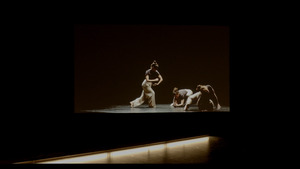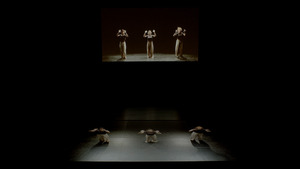HfG
Alle Inhalte mit Metadaten des Vokabulars "HfG". Sie sehen nur Inhalte, für die Sie berechtigt sind.
2622 Inhalte
- Seite 1 von 219
(Un)Stopped Motion
- Titel
- (Un)Stopped Motion
- Autor/in
- Schlagworte
- Datierung
- 24.09.2025-29.09.25
- Titel
- (Un)Stopped Motion
- Titel (en)
- (Un)Stopped Motion
- Urheberrechtshinweis
- © Arthur Schuman
- Rechtsschutz/Lizenz
- Medienersteller/in
- Beziehung/Funktion
- Abgebildete Personen
- Projektleiter/in
- Semester
- Studiengang
- Typ der Abschlussarbeit
- Importiert am
- 22.10.2025
- Übergeordnete Sets
- 1
(Un)Stopped Motion
- Titel
- (Un)Stopped Motion
- Autor/in
- Schlagworte
- Datierung
- 24.09.2025-29.09.25
- Titel
- (Un)Stopped Motion
- Titel (en)
- (Un)Stopped Motion
- Urheberrechtshinweis
- © Arthur Schuman
- Rechtsschutz/Lizenz
- Medienersteller/in
- Beziehung/Funktion
- Projektleiter/in
- Semester
- Studiengang
- Typ der Abschlussarbeit
- Importiert am
- 22.10.2025
- Übergeordnete Sets
- 1
(Un)Stopped Motion
- Titel
- (Un)Stopped Motion
- Autor/in
- Schlagworte
- Datierung
- 24.09.2025-29.09.2025
- Titel
- (Un)Stopped Motion
- Titel (en)
- (Un)Stopped Motion
- Urheberrechtshinweis
- © Arthur Schuman
- Rechtsschutz/Lizenz
- Medienersteller/in
- Beziehung/Funktion
- Abgebildete Personen
- Projektleiter/in
- Semester
- Studiengang
- Typ der Abschlussarbeit
- Importiert am
- 22.10.2025
- Übergeordnete Sets
- 1
(Un)Stopped Motion (updated)
- Titel
- (Un)Stopped Motion (updated)
- Autor/in
- Schlagworte
- Datierung
- 24.09.2025-29.09.25
- Titel
- (Un)Stopped Motion (updated)
- Titel (en)
- (Un)Stopped Motion
- Urheberrechtshinweis
- © Arthur Schuman
- Rechtsschutz/Lizenz
- Medienersteller/in
- Beziehung/Funktion
- Projektleiter/in
- Semester
- Studiengang
- Typ der Abschlussarbeit
- Importiert am
- 25.11.2025
- Übergeordnete Sets
- 1
(Un)Stopped Motion
- Titel
- (Un)Stopped Motion
- Autor/in
- Schlagworte
- Datierung
- 24.09.2025-29.09.25
- Titel
- (Un)Stopped Motion
- Titel (en)
- (Un)Stopped Motion
- Urheberrechtshinweis
- © Arthur Schuman, Paul Schmidt
- Rechtsschutz/Lizenz
- Medienersteller/in
- Medien-Beschreibung
- Plakat
- Medien-Beschreibung (en)
- Poster
- Projektleiter/in
- Semester
- Studiengang
- Typ der Abschlussarbeit
- Importiert am
- 22.10.2025
- Übergeordnete Sets
- 1
(Un)Stopped Motion
- Titel
- (Un)Stopped Motion
- Autor/in
- Schlagworte
- Datierung
- 24.09.2025-29.09.2025
- Titel
- (Un)Stopped Motion
- Titel (en)
- (Un)Stopped Motion
- Urheberrechtshinweis
- © Arthur Schuman
- Rechtsschutz/Lizenz
- Medienersteller/in
- Beziehung/Funktion
- Abgebildete Personen
- Projektleiter/in
- Semester
- Studiengang
- Typ der Abschlussarbeit
- Importiert am
- 22.10.2025
- Übergeordnete Sets
- 1
(Un)Stopped Motion
- Titel
- (Un)Stopped Motion
- Autor/in
- Schlagworte
- Datierung
- 24.09.2025-29.09.2025
- Titel
- (Un)Stopped Motion
- Titel (en)
- (Un)Stopped Motion
- Urheberrechtshinweis
- © Arthur Schuman
- Rechtsschutz/Lizenz
- Medienersteller/in
- Beziehung/Funktion
- Abgebildete Personen
- Projektleiter/in
- Semester
- Studiengang
- Typ der Abschlussarbeit
- Importiert am
- 22.10.2025
- Übergeordnete Sets
- 1
(Un)Stopped Motion
- Titel
- (Un)Stopped Motion
- Autor/in
- Schlagworte
- Datierung
- 24.09.2025-29.09.2025
- Titel
- (Un)Stopped Motion
- Titel (en)
- (Un)Stopped Motion
- Urheberrechtshinweis
- © Arthur Schuman
- Rechtsschutz/Lizenz
- Medienersteller/in
- Beziehung/Funktion
- Abgebildete Personen
- Projektleiter/in
- Semester
- Studiengang
- Typ der Abschlussarbeit
- Importiert am
- 22.10.2025
- Übergeordnete Sets
- 1
(Un)Stopped Motion
- Titel
- (Un)Stopped Motion
- Autor/in
- Schlagworte
- Datierung
- 24.09.2025-29.09.2025
- Titel
- (Un)Stopped Motion
- Titel (en)
- (Un)Stopped Motion
- Urheberrechtshinweis
- © Arthur Schuman
- Rechtsschutz/Lizenz
- Medienersteller/in
- Beziehung/Funktion
- Abgebildete Personen
- Projektleiter/in
- Semester
- Studiengang
- Typ der Abschlussarbeit
- Importiert am
- 22.10.2025
- Übergeordnete Sets
- 1
(Un)Stopped Motion
- Titel
- (Un)Stopped Motion
- Autor/in
- Schlagworte
- Datierung
- 24.09.2025-29.09.2025
- Titel
- (Un)Stopped Motion
- Titel (en)
- (Un)Stopped Motion
- Urheberrechtshinweis
- © Arthur Schuman
- Rechtsschutz/Lizenz
- Medienersteller/in
- Beziehung/Funktion
- Abgebildete Personen
- Projektleiter/in
- Semester
- Studiengang
- Typ der Abschlussarbeit
- Importiert am
- 22.10.2025
- Übergeordnete Sets
- 1
(Un)Stopped Motion
- Titel
- (Un)Stopped Motion
- Autor/in
- Schlagworte
- Datierung
- 24.09.2025-29.9.2025
- Titel
- (Un)Stopped Motion
- Titel (en)
- (Un)Stopped Motion
- Urheberrechtshinweis
- © Arthur Schuman
- Rechtsschutz/Lizenz
- Medienersteller/in
- Beziehung/Funktion
- Projektleiter/in
- Semester
- Studiengang
- Typ der Abschlussarbeit
- Importiert am
- 22.10.2025
- Übergeordnete Sets
- 1
(Un)Stopped Motion
- Titel
- (Un)Stopped Motion
- Autor/in
- Schlagworte
- Datierung
- 24.09.2025-29.09.2025
- Titel
- (Un)Stopped Motion
- Titel (en)
- (Un)Stopped Motion
- Urheberrechtshinweis
- © Arthur Schuman
- Rechtsschutz/Lizenz
- Medienersteller/in
- Beziehung/Funktion
- Abgebildete Personen
- Projektleiter/in
- Semester
- Studiengang
- Typ der Abschlussarbeit
- Importiert am
- 22.10.2025
- Übergeordnete Sets
- 1











